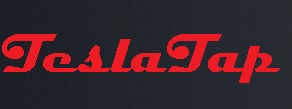Understanding EVSE's
Many people do not fully understand the process of how an EVSE (Electric Vehicle Supply Equipment) communicates with their Electric Vehicle.
The Tesla UMC, Wall Connector, and Destination chargers are all considered as EVSE's.
First thing to note is that there is no charger in the EVSE and that it just supplies power to the on-board charger in your electric vehicle.
There are two signals that the Tesla and J-1772 charging protocol uses to communicate between an EVSE and every electric vehicle including Tesla.
Steps in Charging:
1. The charging process begins when you plug the connector from the EVSE into our adapter or your car.
2. The EVSE sends out a signal (duty cycle) on the pilot pin that informs the vehicle what the MAXIMUM amount of power is available at the EVSE. This is to stop the car from pulling to much power and blowing the circuit breaker that feeds power to the EVSE.
3. Once the car sees this signal and it decides that the available power is above the MINIMUM required by the on board charger it will modify the voltage on the pilot pin to inform the EVSE that it wants to activate the contactor (switch) and start feeding power into the onboard charger.
Notes:
So if you have a Wall Connector or Destination charger that is set for 80 AMPS it will never send that much power to the car because the on-board charger will never be able to accept that amount of power. If you are going to charge continuously (over 3 hours) the National Electrical Code (NEC) rule states that you will need to make sure that whatever connectors you use will need to be rated at 120% of the maximum power that will be traversing the connector.
